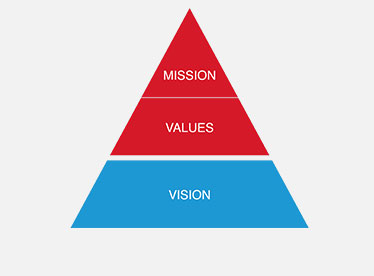-
Products
-
Transportation & Mobility Solutions
Transportation & Mobility Solutions
At Hitachi, we engineer industry-leading transportation and mobility solutions by leveraging decades of knowledge and using high-quality automotive material and components.
-
Energy Solutions
Energy Solutions
We believe the only solution for fulfilling the growing power requirements of industries and society is through a comprehensive portfolio of sustainable energy solutions and delivering innovative high-efficiency energy systems.
-
IT Infrastructure Services
IT Infrastructure Services
Hitachi’s state-of-the-art IT products and services are known to streamline business processes which result in better productivity and a higher return on investment (ROI).
-
Social Infrastructure: Industrial Products
Social Infrastructure: Industrial Products
Within the industrial sector, Hitachi is consistently delivering superior components and services, including industrial and automation solutions, useful in manufacturing facilities.
-
Healthcare & Life Sciences
Healthcare & Life Sciences
At Hitachi, we believe that healthcare innovation is crucial to a society’s advancement. A strong healthcare sector is often considered an inseparable element of a developed society.
-
Scientific Research & Laboratory Equipments
Scientific Research & Laboratory Equipments
Hitachi focuses on extensive research and development, transformative technology, and systems innovation to unfold new possibilities and create new value through scientific endeavors that strengthen the connection between science and social progress.
-
Smart Audio Visual Products
Smart Audio Visual Products
Since 1956, Hitachi audio visual products have provided state of the art solutions to consumers all over the world. It has been our pleasure to design competitive products at the lowest possible prices while maintaining our industry-leading quality standards for your comfort and enjoyment.
-
View All Products
Hitachi Products & Solutions
Hitachi, a technology leader in the U.S., offers a diverse set of products and solutions, and breakthrough technologies for smart manufacturing, green energy and mobility solutions that empower governments, businesses, and communities.
-
Transportation & Mobility Solutions
- Social Innovation Solutions
-
About Us
-
Hitachi in the U.S.A.
Hitachi in the U.S.A.
Discover information about the Hitachi group network across the Americas, upcoming events and sustainability endeavours, CSR policies, and corporate government relations.
-
About Hitachi Group
About Hitachi Group
Explore our leadership team, investor relations, environmental vision, and sustainability goals. Learn how Hitachi is leveraging its research & development capabilities for social innovation across industry verticals.
-
Hitachi in the U.S.A.
- News Releases
- Case Studies
- Careers
- R&D
HITACHI AMERICA ANNOUNCES “FINGER VEIN” TECHNOLOGY PASSES CBT ROUND 6 EVALUATION
BRISBANE, Calif., October 23, 2006 – Hitachi America, Ltd., a subsidiary of Hitachi, Ltd. (NYSE: HIT) today announced that Hitachi’s “Finger Vein” vascular ID technology has passed evaluation by Comparative Biometric Testing (CBT) Round 6. Hitachi’s Finger Vein Biometrics technology uses near-infrared light to capture a finger’s vein patterns which are matched to stored data to authenticate an individual’s identity.
CBT Round 6 evaluated full biometric systems representative of those utilized in access control, point-of-sale, border management, logical access, and ID systems applications. CBT is one of few biometric testing efforts focused on full-system performance. Biometric comparisons are based on comparison of recognition samples and enrollment templates. There were about 19,000 genuine comparisons and about 25 million impostor comparisons executed.
CBT Round 6 represents the first major independent test inclusive of multiple vascular recognition technologies. Vascular recognition has gained considerable traction in Japan, and is in the process of being introduced into global markets including the U.S.
Hitachi achieved failure-to-enroll (FTE) rates that can be considered exceptionally low for this type of testing. While a typical biometric systems’ enrollment time can be approximately one minute, Hitachi demonstrated enrollment transaction duration of 33.3 seconds. Enrollment Transaction Duration includes time required for the Test Subject to align himself with the acquisition device, all presentations required to enroll, time lapsed between enrollment of the first and second instance, and enrollment template generation.
The failure-to-enroll (FTE), false acceptance rate (FAR), and false rejection rate (FRR) generated by the Hitachi system were exceptionally low. Enrollment capabilities are essential to decision-making in large-scale, mass-market systems. The Hitachi system was able to capture a very high percentage of finger vein templates. Hitachi also showed very short Enrollment Transaction Duration (33.3 seconds) and Recognition Attempt Duration (1.32 seconds). This data helps address the question of vascular recognition's usability for a high percentage of the population. Hitachi provided highly robust 1:1 FNMR at various thresholds, and also provided very rapid sample capture. Based on CBT Round 6 results, one might speculate that a highly-habituated population would perform very well on the Hitachi system due to its very low Same-Day FNMR.
Summarizing the results, Hitachi noted that vascular recognition – a modality seen as novel in the U.S. – appears to be a very serious competitor to fingerprint, hand geometry, and certain iris recognition systems used in large-scale 1:1 access control, logical access, and consumer ID applications. The systems tested provided a strong combination of usability and accuracy.






